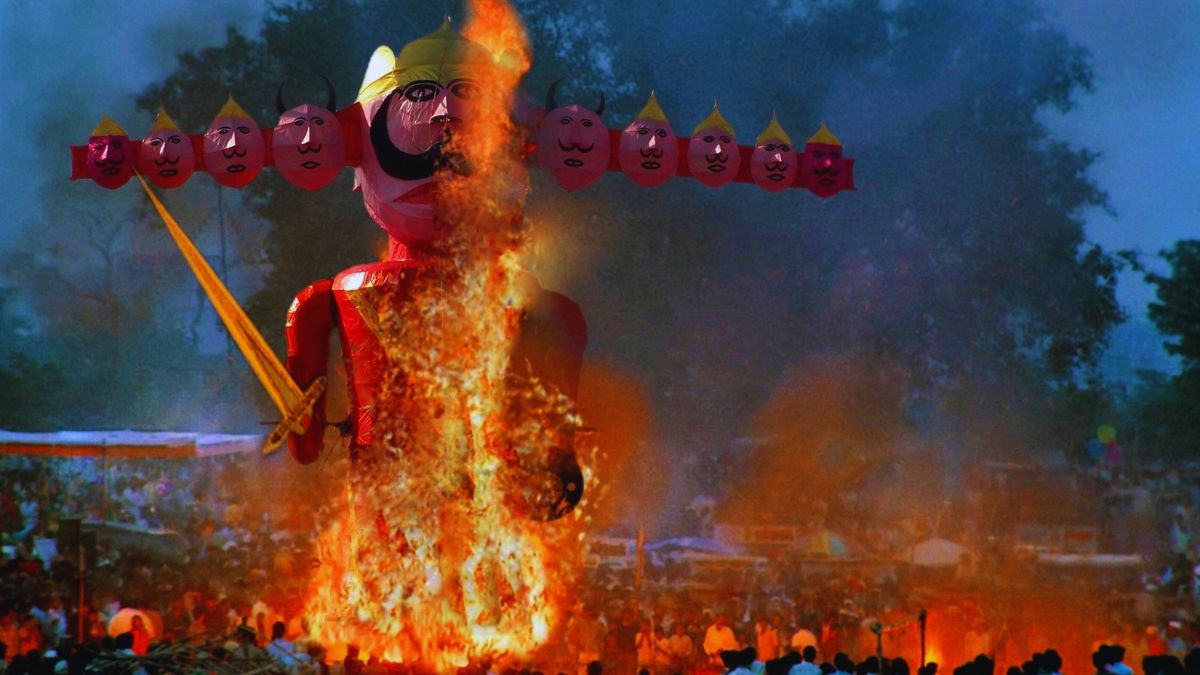- By Kashish Rai
- Sat, 12 Oct 2024 12:59 PM (IST)
- Source:JND
Dussehra 2024: Celebrated on the tenth day of Ashwin's waxing moon phase, Dussehra commemorates Lord Rama's triumph over Ravana. As per Hindu Shastras, Ravan Dahan, the burning of Ravana's effigy, symbolises the destruction of evil forces. This ritual embodies the victory of good over evil, knowledge over ignorance, and righteousness over sin. By burning Ravana, Hindus reaffirm their commitment to dharma and seek Lord Rama's blessings for strength and courage. The occasion also marks the culmination of the nine-day Navratri festival, honouring Goddess Durga's victory over Mahishasura. Ravan Dahan serves as a poignant reminder of the eternal struggle between virtue and vice. This year, Dussehra will be observed on 12th October 2024.
Check out the date, time, shubh muhurat and puja rituals for Ravan Dahan on Dussehra below:
Dussehra 2024: Ravan Dahan Time And Shubh Muhurat
The auspicious time for Ravan Dahan on 12th October 2024 is determined by astrological calculations. The Dussehra celebrations commence on 12th October at 10:58 AM and conclude on 13th October at 09:08 AM. The optimal time for Ravan Dahan is post-sunset, specifically between sunset and 10:33 PM, making this brief window the most sacred for performing the symbolic burning of Ravana's effigy.

Ravan Dahan commemorates Lord Rama's victory, symbolising good's triumph over evil, ignorance, and sin, promoting righteousness and justice. (Image Source: Canva)
Dussehra 2024: Ravan Dahan Puja Rituals On Vijayadashami
According to Hindu scriptures, Dussehra Puja and Ravan Dahan rituals commence with cleansing and purifying the surroundings. Devotees erect effigies of Ravana, Kumbhakarna, and Meghnad, symbolizing evil forces. The puja begins with Ganesha Pujan, invoking Lord Ganesha's blessings. Next, devotees worship Lord Rama, Goddess Sita, and Lord Hanuman, offering prayers and reciting Ramayana verses.
Ravan Dahan Ritual
The Ravan Dahan ritual involves burning the effigies, symbolizing the destruction of evil. This is typically done at sunset, accompanied by chanting of mantras and blowing of conch shells. Devotees offer prayers to Lord Rama, seeking strength and courage. The burning of Ravana's effigy represents the triumph of good over evil, knowledge over ignorance, and righteousness over sin.
Post-Puja Rituals and Significance
Following Ravan Dahan, devotees offer aarti to Lord Rama and seek blessings for prosperity and happiness. The occasion marks the culmination of the nine-day Navratri festival, honouring Goddess Durga's victory over Mahishasura. Dussehra Puja and Ravan Dahan serve as reminders of the eternal struggle between virtue and vice. By performing these rituals, devotees reaffirm their commitment to dharma and seek divine guidance for overcoming life's challenges. The festivities conclude with the distribution of sweets and exchange of greetings, promoting unity and harmony among family and friends.
(Disclaimer: This is based on general public information. Jagran English does not confirm its veracity. Before adopting any measures, consult an expert in the relevant field.)

